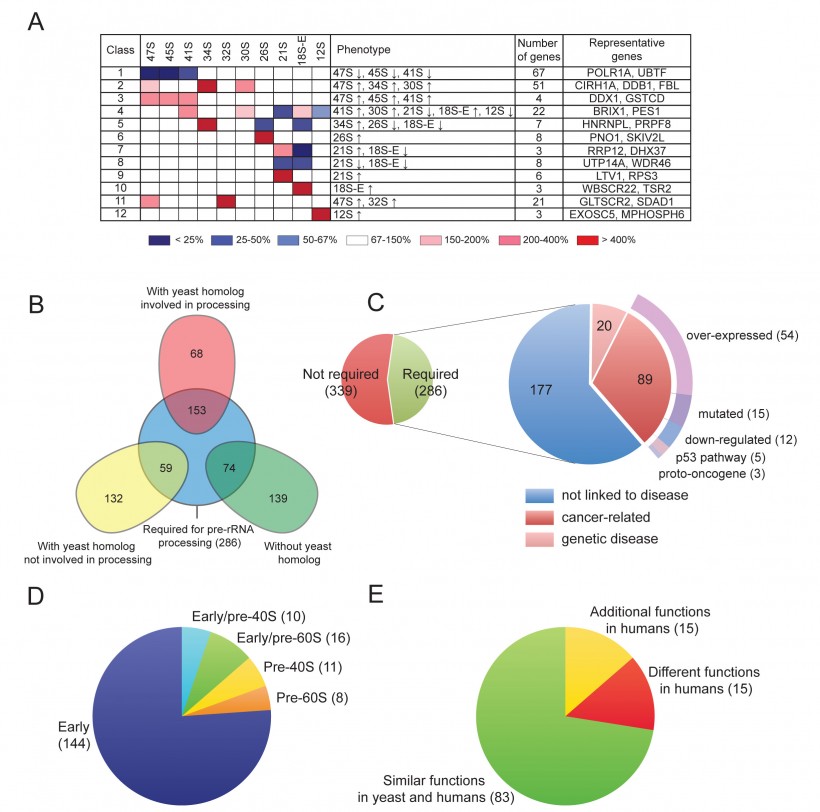Functional classes of human pre-rRNA processing factors
A, Gene products whose depletion led to a similar alteration in the accumulation/reduction of pre-rRNAs were grouped into 12 classes. The heatmap is showing prototypic alterations in the accumulation/reduction of pre-rRNA intermediates in each class. Key: red indicates high abundant RNAs whereas blue indicates low abundant RNAs. The color-code expresses the percentage of each RNA with respect to the SCR control. The number of genes in each class and examples are indicated.
B-C, Venn diagrams showing the distribution of the 286 genes identified as human pre-rRNA processing factors, whose depletion leads to a > 1.5-fold alteration of at least one pre-rRNA species, into three classes depending on the existence of yeast homologs involved or not in pre-rRNA processing (B) and their connection to diseases (C).
D-E, Venn diagrams showing the distribution of the 189 genes identified as human pre-rRNA processing factors, whose depletion leads to a > 2.5-fold alteration of at least one pre-RNA species, according to its involvement in early pre-rRNA processing (cleavage at sites 01, A0 and 1), the synthesis of the small (pre-40S) or the large (pre-60S) subunits (D), and functional conservation between 110 human genes and their yeast homologs (E).
A list of the human pre-rRNA processing factors identified in this work is available here.

